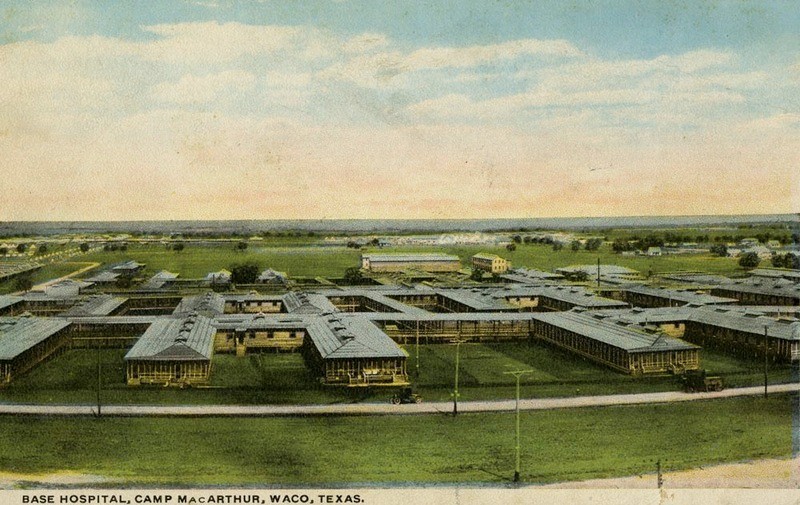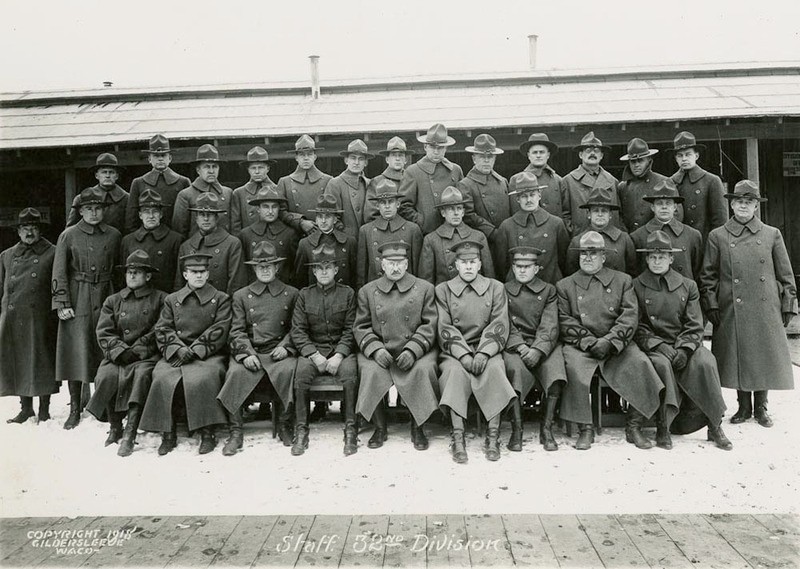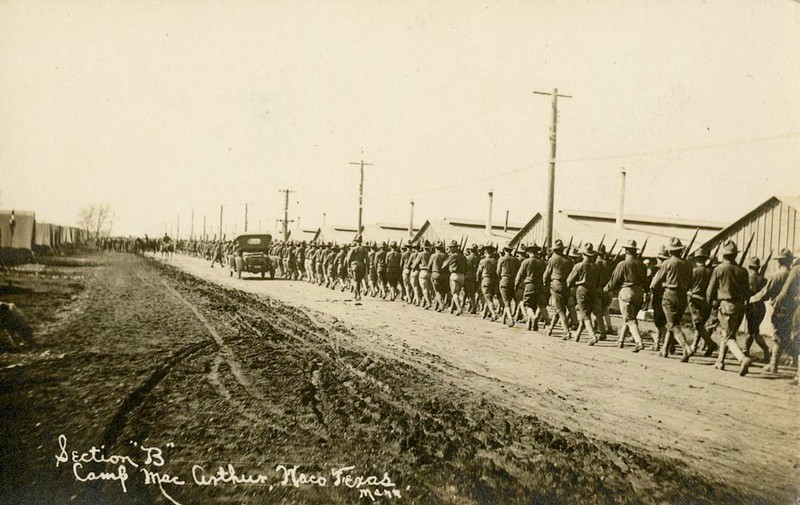Camp MacArthur
Introduction
Text-to-speech Audio
Images
Base Hospital at Camp MacArthur

Staff of the 32nd Division

Soldiers marching at Camp MacArthur

Panorama of the Camp in 1918

Backstory and Context
Text-to-speech Audio
America's reluctant entry into WWI in 1917 was marked with by animosity toward Germany combined with national pride and worry over the horrors of the Western Front. At the same time, however, the war turned out to be economically beneficial for many cities across the United States.
History of the Camp
WWI was a complicated matter, and the US population was either strictly anti-Kaiser or, like many of the soldiers in Britain, France, and Germany in 1914, driven by nationalist fervor in the Great War environment. Three years after the war’s start in Europe, the US declared war against Germany. However, the US lacked military manpower to fight in the war, and the federal government mandated the construction of 16 National Guard training camps across the country.
In Waco, with the help of a $5 million grant and aid from local businessmen, Camp MacArthur began construction on July 10th, 1917. By September, with most of the administrative offices, the tent city, and other military buildings ready, trainees from Wisconsin and Michigan arrived.
Camp MacArthur served three essential functions: an infantry replacement and training camp, an officers’ training school, and later as a demobilization facility. The Guardsmen who first arrived in Waco as part of the 32nd U.S. Infantry Devision would eventually join the American Expeditionary Forces near Langres, France, on February 24, 1918.
The soldiers in the 32nd, also known as the “Red Arrow” division, distinguished themselves in France for their successful and tenacious attacks on enemy positions, and they garnered the name of “Les Terribles.” Many of the soldiers trained at Waco would eventually receive military decorations from foreign governments.
In addition to the trainees from Wisconsin and Michigan, recruits from Texas, Arkansas, Missouri, and New Mexico arrived in Waco. Following the war’s armistice on November 11th, 1918, the camp functioned as a demobilization facility, and it officially closed on March 7th, 1919. Materials from the camp’s infrastructure would later be used for the US-Mexican border as well as for Waco’s Edgefield neighborhood.
How the Camp Transformed Waco
The most significant effect that Camp MacArthur had on Waco was the economic prosperity the influx of soldiers brought to the modest town. At the time, the camp doubled Waco’s population and gave local businesses a large demographic for sales.
Furthermore, the town’s morale also skyrocketed. This could be seen with the Cotton Palace Exposition of 1917, which featured exhibits such as a bullet-ridden German biplane. This economic prosperity and morale remained after the war, and Waco was booming until the Great Depression devastated the town.
The presence of the camp and US Army’s insistence on decreasing distractions also played a major role in the closing of Waco’s red light district, known as “The Reservation.”1
Historical Marker Inscription
Named for and dedicated by Lt. Gen Arthur MacArthur, U.S.A., veteran of Civil War, outstanding officer in Phillipines, 1898-1902, Father of Gen. Douglas MacArthur. Founded July 18, 1917, to train 32nd division, National Guard, in First World War. Capacity was 45,074--at time when Waco had a population of 32,000. First had troops from Michigan and Wisconsin; later, Arkansas, Missouri, New Mexico, Texas. The 32nd went to France in Feb. 1918. MacArthur became an infantry replacement and training camp and officers training school. Demobilized 11,000 in Dec. 1918.2
